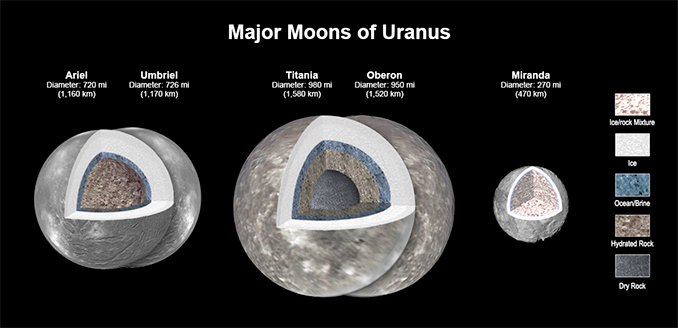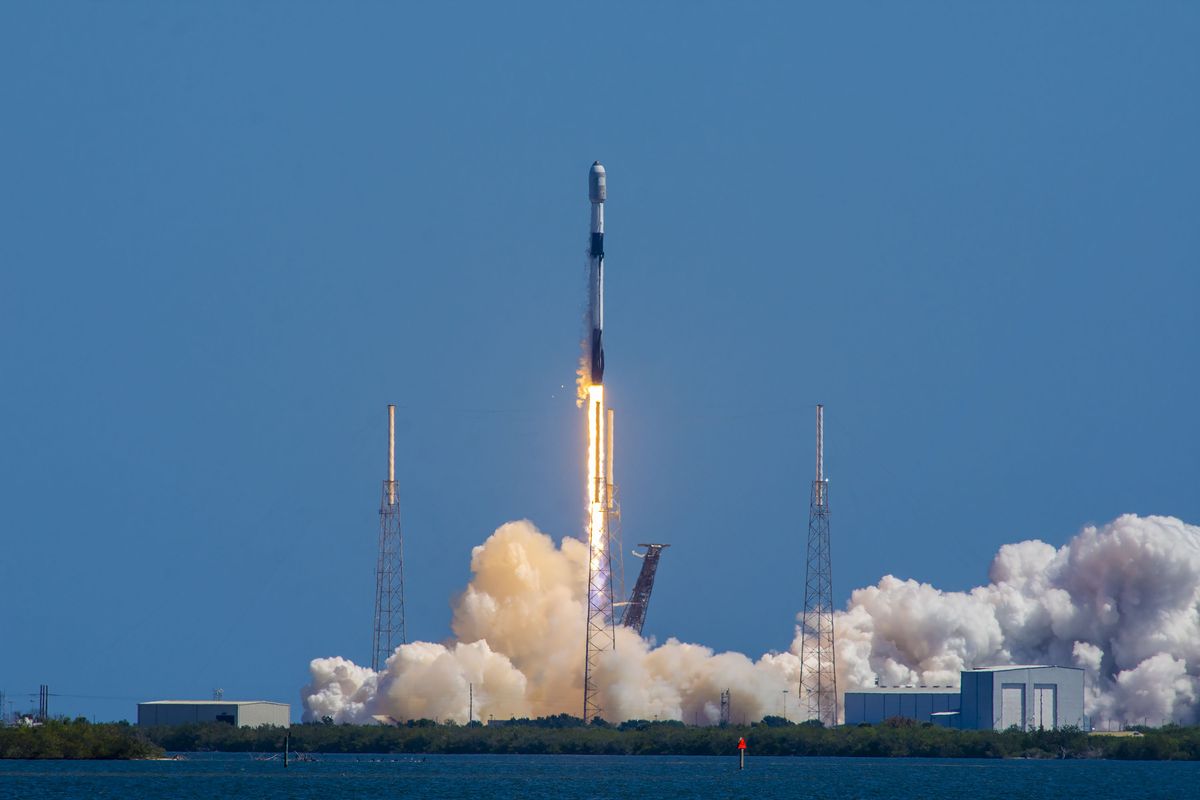Oceans of water hidden beneath the frozen crusts of huge moons orbiting Jupiter, Saturn and completely different icy our our bodies inside the outer picture voltaic system are a scorching matter in planetary astronomy, with NASA and the European Home Firm every sending probes to Jupiter to seek for proof of habitable sub-surface environments.
Now add Uranus to the mixture.
Re-analysis of data collected by NASA’s Voyager 2 spacecraft, along with superior laptop computer modelling, implies that 4 of Uranus’ largest moons – Ariel, Umbriel, Titania and Oberon – may harbour oceans dozens of miles underneath their frigid surfaces.
“By way of small our our bodies – dwarf planets and moons – planetary scientists beforehand have found proof of oceans in numerous unlikely areas, along with the dwarf planets Ceres and Pluto, and Saturn’s moon Mimas,” acknowledged Julie Castillo-Rogez, a Jet Propulsion Laboratory researcher and lead author of a paper inside the Journal of Geophysical Evaluation.
“So there are mechanisms at play that we don’t completely understand. This paper investigates what these could be and the best way they’re associated to the quite a few our our bodies inside the picture voltaic system that could be rich in water nonetheless have restricted internal heat.”
The analysis incorporates information collected by Voyager and laptop computer fashions using information from the Galileo Jupiter orbiter, the Dawn asteroid mission and the New Horizons flyby of Pluto and its moon Charon, along with insights provided by the Cassini probe’s analysis of Saturn’s moon Enceladus.
The modelling helped researchers determine the porosity of the surfaces of Uranus’ moons, which signifies they’re seemingly insulated enough to retain the heat wished for liquid oceans to exist beneath the ground.
That heat may be provided by radioactive decay, nonetheless the analysis moreover suggests chlorides, along with ammonia, usually tend to be ample, serving as a type of antifreeze. Nonetheless many questions keep and additional work is required to hammer out the details.
“We have now to develop new fashions for varied assumptions on the origin of the moons as a option to data planning for future observations,” acknowledged Castillo-Rogez.


